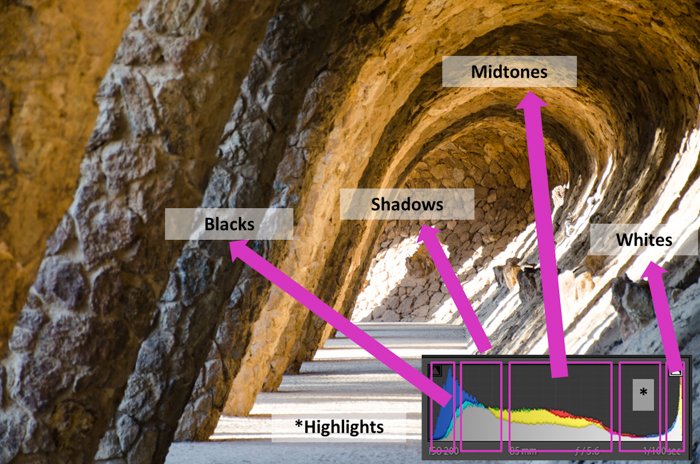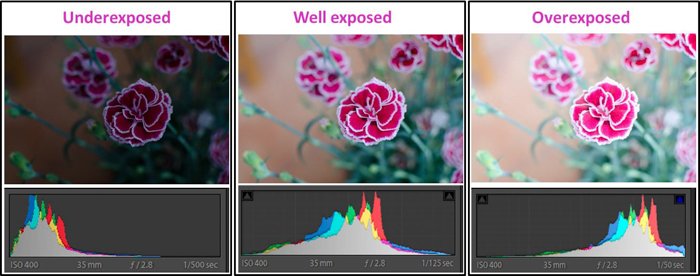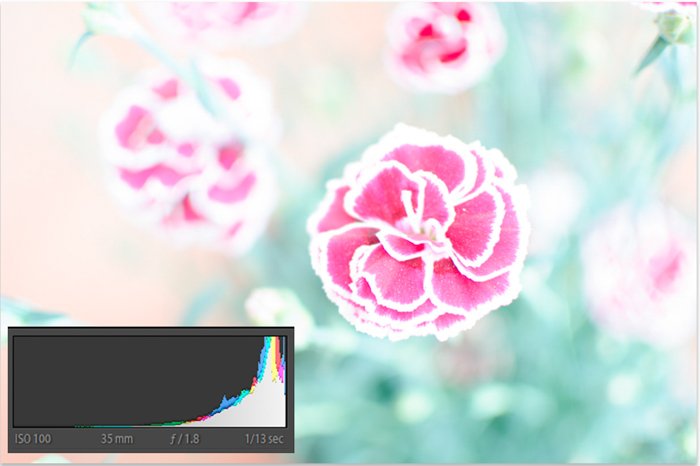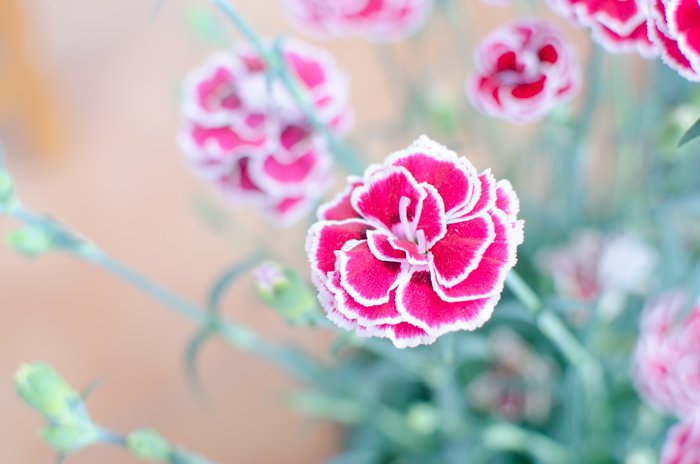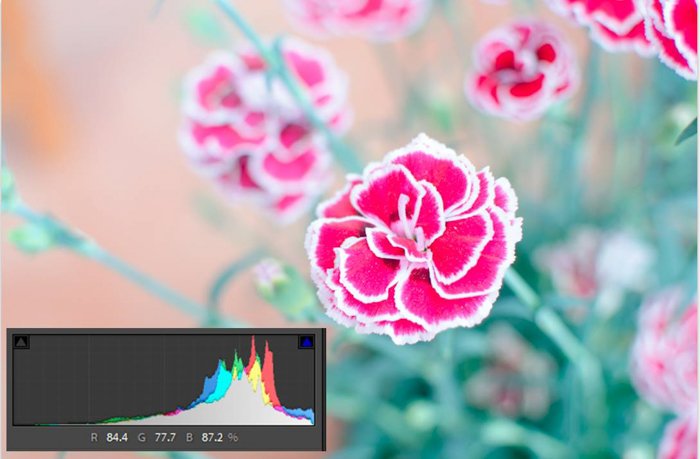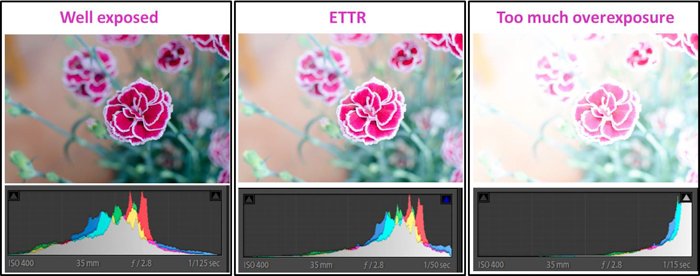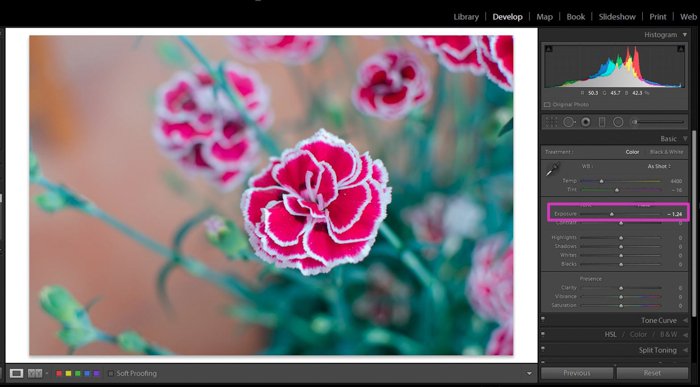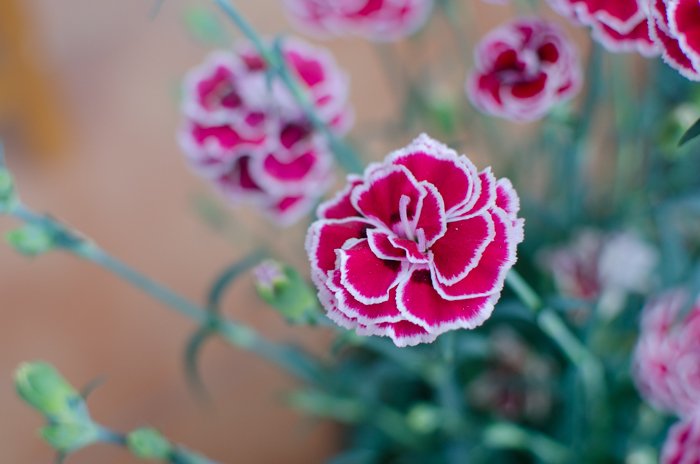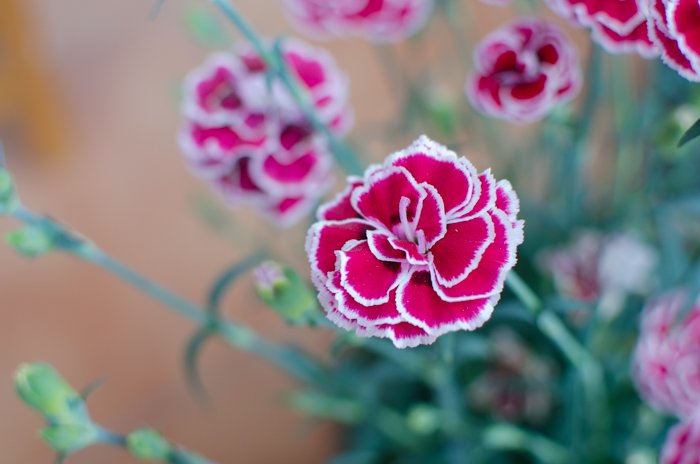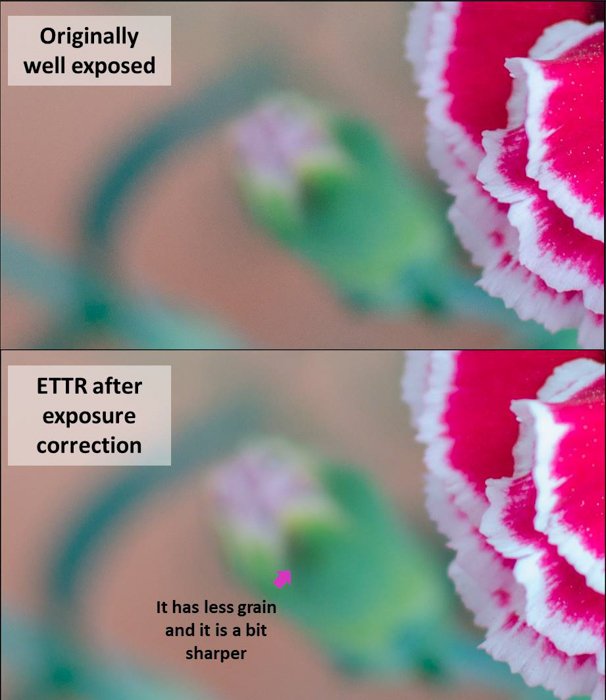But ETTR is controversial. A lot of photographers agree and find ETTR really useful. But there are those who think that it is an unnecessary complication. These opinion differences might originate from the fact that ETTR is not the easiest technique. It can ruin your exposure if you use it incorrectly. And good results are not obvious in all situations. Let´s see what it is about and then you can decide for yourself if ETTR is for you.
1. The Fundamentals of Exposure To The Right (ETTR)
Exposure refers to the amount of light that reaches your camera’s sensor. A technically well-exposed image is one that feels bright or dark enough. It does not lose details in the shadows or highlights. And it has a similar look to the original scene that was shot. Getting the right exposure requires an understanding of the exposure triangle, ISO and exposure compensation. Head on over to our tutorial on the exposure triangle if you want to refresh your knowledge.
How to Read a Histogram and Why It’s Important
Almost all cameras these days show you the photo histogram. This is a great tool that enables you to check the exposure of your images. It is a graph set on two axes and it represents the range of tones in your image.
The horizontal axis represents all the tonal range your image has, from pure black on the left side to pure white on the right. Tonal levels can be divided into groups from lighter to darker. We have whites, highlights, mid-tones, shadows, and blacks.
The peaks of the histogram represent the percentage of the pixels that have a certain exposure value. The higher the peak, the more pixels in the tone you will have. If the histogram is stretched all over the horizontal axis, the image is considered well exposed. If the histogram has more weight on the left side, it means that the dark tones are predominant in the image. You can say that your photo is underexposed. If the histogram has more weight to the right, the photo is overexposed and light tones are dominant. It might happen that the peaks in one or both extremes are reaching out of the graph. This means that you clipped the blacks (on the left side) or you burnt the highlights (on the right side).
Why ETTR Can Help You Get Better Images
The idea behind ETTR is to take photos with the histogram pushed slightly towards the whites while making sure not to burn the highlights. In other words, you intentionally overexpose your image without burning it. But what is it good for? The theory is that once you process the photo back to the correct exposure, you will end up with a higher quality file than if you expose the photo correctly or underexpose it. How does it happen? The sensor of the camera captures light in a non-linear way. The sensor has less space for capturing dark tones than it has for capturing bright tones. For that reason, the right side of the histogram has more capacity to store information. This has an important implication regarding the quality of the image file. Trying to recover details from blacks in post-processing will produce noise in your image. There is not a lot of information to recover detail from. If you want to recover detail from the highlights, they have a higher capacity to store information. The recovery process won’t affect the final quality of your image. In fact, when you darken an ETTR image, you bring it to a lower ISO than when you took it. This reduces its noise.
How to Use ETTR to Get Better Quality Images
When attempting to use the ETTR method, it is crucial to shoot in RAW. You will need to post-process the images later. RAWs will allow you to do more adjustments than JPGs. ETTR is an easy technique. You need to be careful not to burn the highlights because this can totally ruin your image. Use the light meter of your camera to evaluate the scene. Adjust the exposure triangle settings to be overexposed. Start by taking one overexposed image.
To be certain that you didn’t burn the photo, check the histogram to make sure the highlights are not ‘climbing’ on the right side of the graph. If your camera has the option to display ‘blinkies’ (a visual indicator that marks burnt areas), enable it. This way you can see the pure-white areas blinking. Keep in mind that blinkies are not as accurate as the histogram.
If you think you can push the exposure of your image a bit further to the right, adjust the camera settings again and take another photo. Stop increasing the exposure when you see that you are burning the whites.
Lastly, bring down the exposure in post-processing. You can use any editing software such as Lightroom.
Comparison of Processed ETTR Photo and Original Image
When you compare the photos straight from the camera, you can see that the ETTR is overexposed. After decreasing the exposure of the ETTR image, they both look the same. But if you zoom in on the darker areas, you can see that the correctly exposed image has more noise. It’s also a bit less sharp than the darkened ETTR image. This is exactly what we want to achieve from this technique.
When Should You Use ETTR and When to Avoid It
ETTR is a good technique to know and keep in mind. Using it more or less often will depend on what type of photographer you are. ETTR is very useful if you tend to think ahead and plan the scene. This way, you can give yourself time to get a high-quality final image. This is why landscape photos are a great subject for ETTR. Another aspect that might influence your decision to ETTR or not is what you want to do with the image. If you are going to print it, ETTR could be very beneficial. In other photography situations you might want to avoid using ETTR. For example, in kid’s portraits, weddings, sports photography or wildlife photography. You can’t take the chance of missing a shot. Or you might be restricted by the demands of the scene in terms of the camera settings. In these cases, it’s better to be more conservative than risk burning too much of the scene.
Another situation in which ETTR doesn’t make much sense is when you need to increase the ISO in order to overexpose. When you increase the ISO, you also increase the noise in the photo. This is exactly what you try to avoid when applying ETTR. Save yourself from extra work in post-processing by taking a well-exposed photo with the metered exposure.
Conclusion
ETTR is a seemingly easy technique. You just need to overexpose your image and bring back the exposure in post-processing. But it has risks. You can accidentally ruin the image by overexposing too much. Avoid this by mastering the histogram and using the camera blinkies. ETTR is also not useful in every situation. Keep these things in mind before pressing the shutter release.




